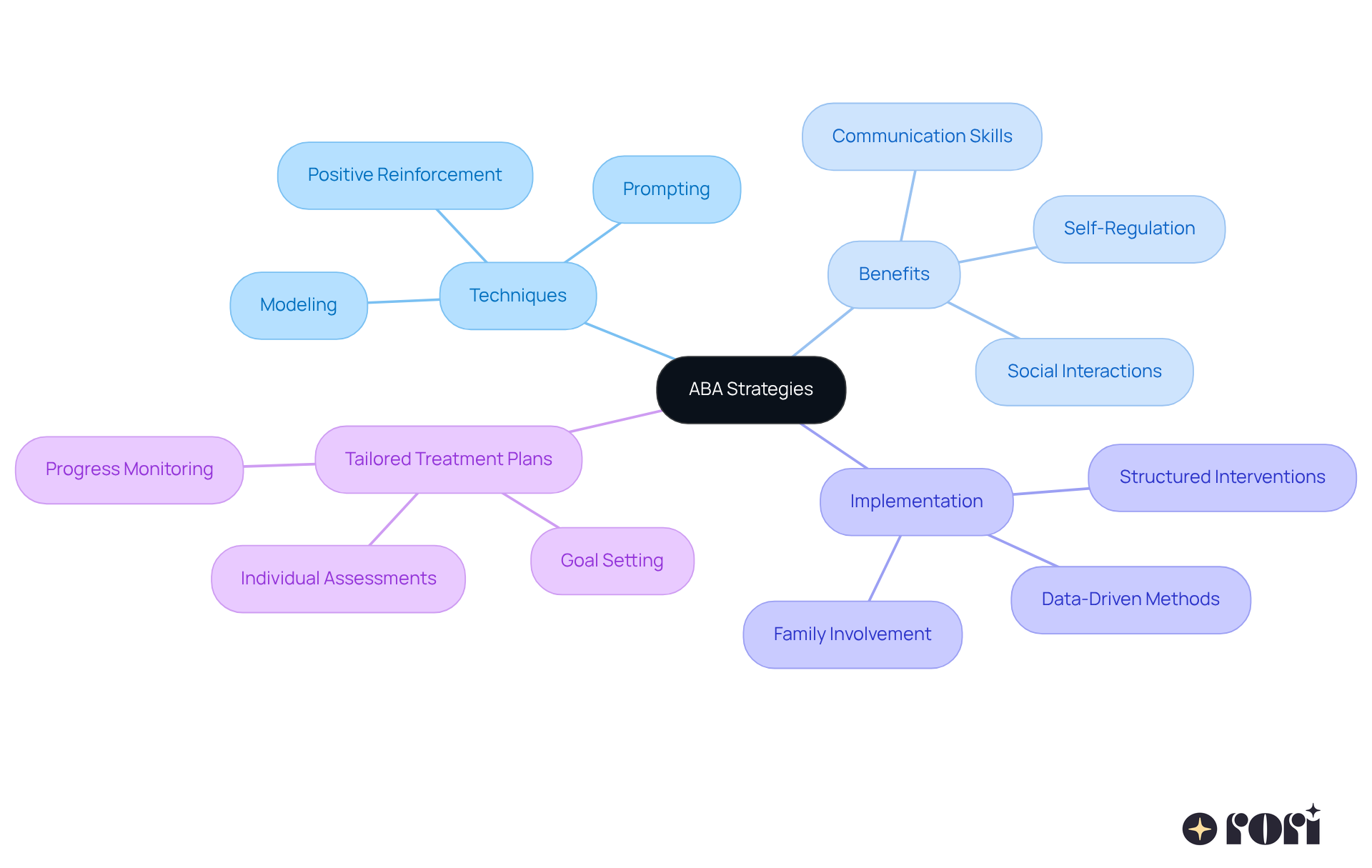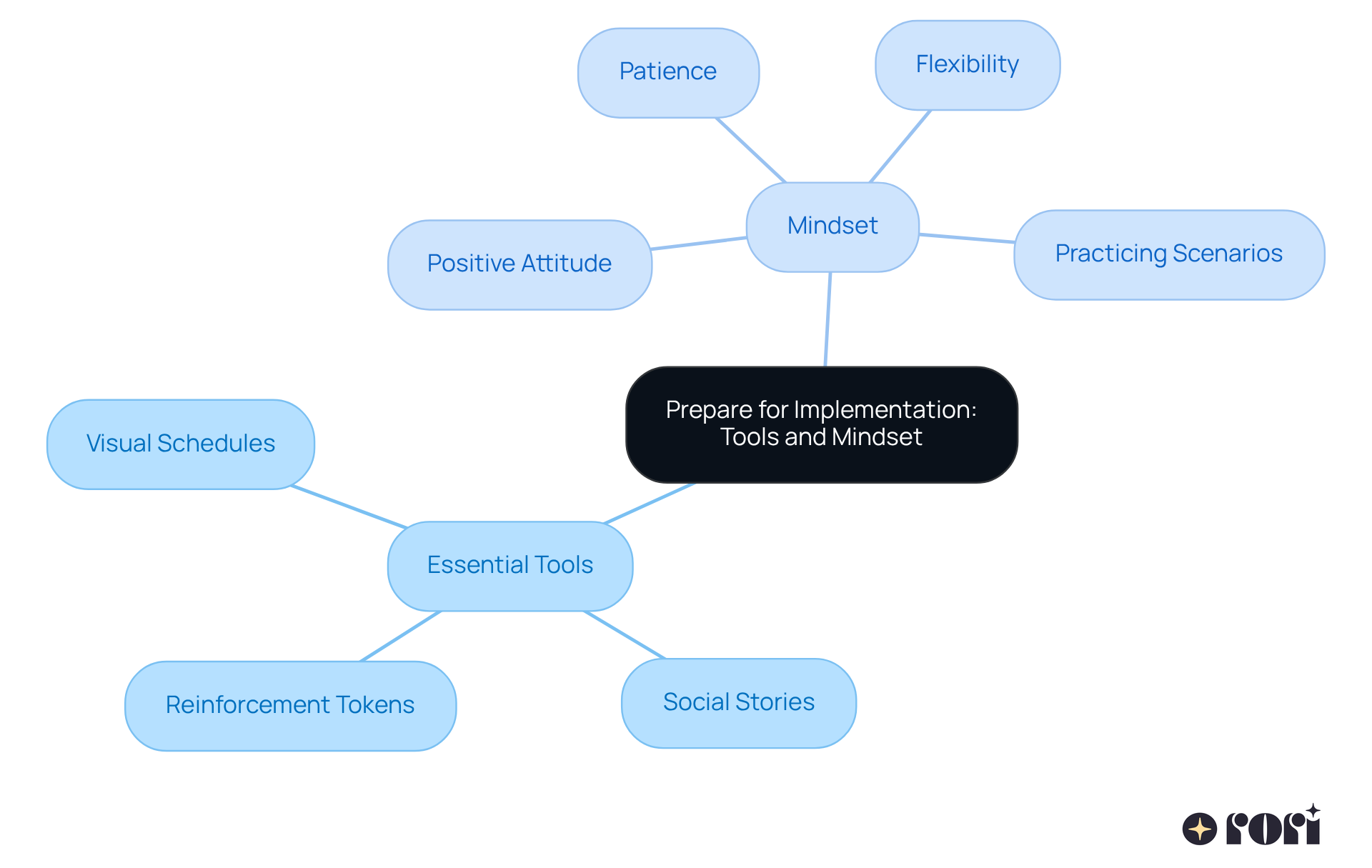Navigating public outings with children on the autism spectrum can be quite a journey for parents. Applied Behavior Analysis (ABA) has become a helpful ally in this adventure, offering practical strategies that can really make a difference. This guide is here to explore how ABA can enhance communication, social interactions, and overall confidence in various environments.
But let’s be real - implementing these techniques in the hustle and bustle of everyday life can be tricky. How can parents prepare and adapt to help their child thrive in the unpredictability of public spaces? Let’s explore this together! 😊
Applied Behavior Analysis (ABA) is a scientifically validated method that focuses on understanding and modifying behavior through reinforcement and structured interventions. You might be surprised to learn that recent studies show intensive ABA therapy - think 25 to 40 hours of sessions weekly over one to three years - can lead to significant improvements in communication skills, social interactions, and self-regulation for individuals with autism. Techniques like positive reinforcement, prompting, and modeling play a crucial role in helping these skills flourish. For instance, a case study on teaching kitchen safety beautifully illustrated how structured routines can boost a young person's independence and safety awareness in real-life situations.
By implementing ABA strategies for public settings, parents can create supportive environments that encourage desired behaviors, making public outings more manageable and enjoyable. Understanding and applying ABA methods empowers parents to tackle challenges head-on, ultimately fostering greater autonomy in their children. Experts emphasize the importance of tailored treatment plans, which are essential for meeting each individual's unique needs. This ensures that interventions align with their personal preferences and support systems. This comprehensive approach not only enhances communication skills but also promotes overall developmental progress, making ABA a vital tool for families navigating the complexities of autism. Let’s explore this together!

Before heading out, it’s super helpful for parents to have some essential tools on hand to effectively use ABA techniques. Think of things like visual schedules, social stories, and reinforcement tokens. These items can really make a difference in enhancing communication and easing anxiety for your little ones. Research shows that visual schedules can significantly lower anxiety levels in kids with autism by providing clear expectations and structure.
Now, let’s talk about mindset! Approaching outings with a positive attitude is just as important. It’s all about patience and flexibility - being ready to adapt your strategies as needed. Practicing different scenarios at home can really help kids understand what to expect in public spaces, which can further reduce anxiety and boost their comfort levels.
This kind of preparation not only makes outings more enjoyable but also builds confidence for both you and your child. It paves the way for successful interactions in various environments. So, let’s explore this together and make those outings a breeze!

Identify Target Actions: Let’s start by pinpointing the specific actions you want to encourage or discourage in your little ones. Think about things like waiting patiently, using polite language, or following directions. By clearly defining these behaviors, you lay the groundwork for effective interventions, which can be especially important for kids with Autism Spectrum Disorders, ADHD, and other behavioral challenges. The beauty of ABA therapy is its flexibility, allowing for customized interventions that cater to your loved one’s unique needs.
Use Visual Supports: How about creating a visual schedule that maps out the day’s activities? Visual aids, like schedules or choice boards, can really help kids anticipate what’s coming next, which can lower anxiety and boost their confidence in public spaces. Research shows that these supports can enhance communication and foster independence, aligning perfectly with the evidence-based strategies of ABA therapy. This approach has proven effective in various settings, highlighting the importance of ABA strategies for public settings.
Practice Expected Behaviors: Engaging in role-playing scenarios at home can be a fun way to prepare your child for real-life situations. Practicing actions like waiting in line or asking for help can build their confidence and make these situations feel less daunting. This practice is key for empowering caregivers to implement ABA strategies for public settings effectively, ensuring that those strategies are tailored to your child’s needs.
Implement Reinforcement: Don’t forget to bring along some reinforcement tokens or a reward system to encourage positive behaviors during outings! For instance, if your child waits patiently, they can earn a token toward a small reward. This not only reinforces their good behavior but also motivates them to keep it up. This method utilizes ABA strategies for public settings, rooted in the principles of Applied Behavior Analysis, which emphasizes the importance of reinforcement in shaping behaviors and has shown great results when applied consistently.
Monitor and Adjust: While you’re out and about, keep a close eye on your child’s behavior and be ready to tweak your strategies as needed. If something isn’t working, don’t hesitate to try a different approach or offer extra support to help your child succeed. Regularly assessing how well your strategies are working is crucial to adapting to your child’s evolving needs, reflecting the ongoing evaluation that’s so important in behavioral program development.

Behavioral Outbursts: When your little one feels overwhelmed or has a meltdown, staying calm is key. Try deep breathing techniques - they really help in soothing kids during tough moments. Creating a quiet space for them to regain their composure can make a world of difference, allowing them to process their feelings in a supportive environment. These aba strategies for public settings not only help manage outbursts but also enhance professional interventions, reinforcing your role in their emotional regulation.
Distraction Management: For kids who get easily distracted, visual aids can be a game changer! Think about using visual schedules or charts to help them stay focused. You can also engage them by asking questions about their surroundings or the activities they’re involved in, which redirects their attention and fosters involvement. By implementing aba strategies for public settings, you can boost your child’s focus and support their learning, demonstrating just how beneficial guardian training can be in practice.
Managing Unforeseen Adjustments: It’s always good to prepare for changes in plans by discussing possible scenarios with your child ahead of time. If an outing doesn’t go as planned, reassure them and explain the new situation clearly. Emphasizing flexibility can help them adapt more smoothly to changes. This proactive approach aligns with the informed decision-making that caregiver education promotes, incorporating aba strategies for public settings to support your child’s emotional resilience and adaptability.
Facilitating Peer Interactions: If your child struggles with social interactions, practicing social scripts at home can be really helpful. Encourage them to greet peers or ask to join in activities, and don’t forget to reinforce these behaviors with praise! This practice can build their confidence and improve their social skills over time. By actively participating in these interactions, you empower your child and enhance their social development, illustrating the positive impact of guardian education through aba strategies for public settings.
Recognizing Fatigue: Keep an eye out for signs of tiredness in your child. Knowing when to take breaks is crucial; shorter outings might be more effective than longer ones, especially in busy places. Regular breaks can help maintain their energy levels and overall enjoyment of the outing. Understanding the importance of rest and recovery allows you to make informed choices that support your child’s well-being, which further illustrates the benefits of caregiver education and the application of ABA strategies for public settings.

Implementing Applied Behavior Analysis (ABA) strategies in public settings can truly make a difference for parents looking to boost their child's behavioral skills and independence. By grasping the principles of ABA and customizing interventions to fit individual needs, parents can create supportive environments that nurture positive behaviors during outings. This guide shines a light on the essential tools and mindset needed for successful implementation, reminding us that preparation and adaptability are key to navigating public spaces with confidence.
Throughout this article, we’ve explored various strategies, like the importance of visual supports, practicing expected behaviors, and using reinforcement systems. Each step is crafted to empower both parents and children, making outings more manageable and enjoyable. Plus, we’ve tackled common challenges such as behavioral outbursts, distractions, and fatigue, showcasing how ABA techniques can be applied in real-life situations.
Ultimately, mastering ABA strategies goes beyond just improving behaviors; it fosters a deeper understanding of autism and builds emotional resilience in children. By committing to this structured approach, parents can enhance their child's social skills and independence while also nurturing a more inclusive and supportive community. Embracing these strategies paves the way for successful interactions, encouraging ongoing growth and development for both children and their families.
So, let’s explore this journey together! Remember, you’re not alone in this - we’re here to help you every step of the way!
What is Applied Behavior Analysis (ABA)?
Applied Behavior Analysis (ABA) is a scientifically validated method that focuses on understanding and modifying behavior through reinforcement and structured interventions.
How effective is intensive ABA therapy for individuals with autism?
Recent studies show that intensive ABA therapy, involving 25 to 40 hours of sessions weekly over one to three years, can lead to significant improvements in communication skills, social interactions, and self-regulation for individuals with autism.
What techniques are commonly used in ABA therapy?
Techniques such as positive reinforcement, prompting, and modeling are crucial in ABA therapy to help individuals develop communication skills and other important behaviors.
Can you provide an example of ABA in practice?
A case study on teaching kitchen safety illustrated how structured routines can enhance a young person's independence and safety awareness in real-life situations.
How can parents apply ABA strategies in public settings?
By implementing ABA strategies in public settings, parents can create supportive environments that encourage desired behaviors, making outings more manageable and enjoyable.
Why is it important to have tailored treatment plans in ABA?
Tailored treatment plans are essential in ABA because they ensure that interventions meet each individual's unique needs, aligning with their personal preferences and support systems.
What overall benefits does ABA provide for families navigating autism?
ABA enhances communication skills and promotes overall developmental progress, making it a vital tool for families dealing with the complexities of autism.